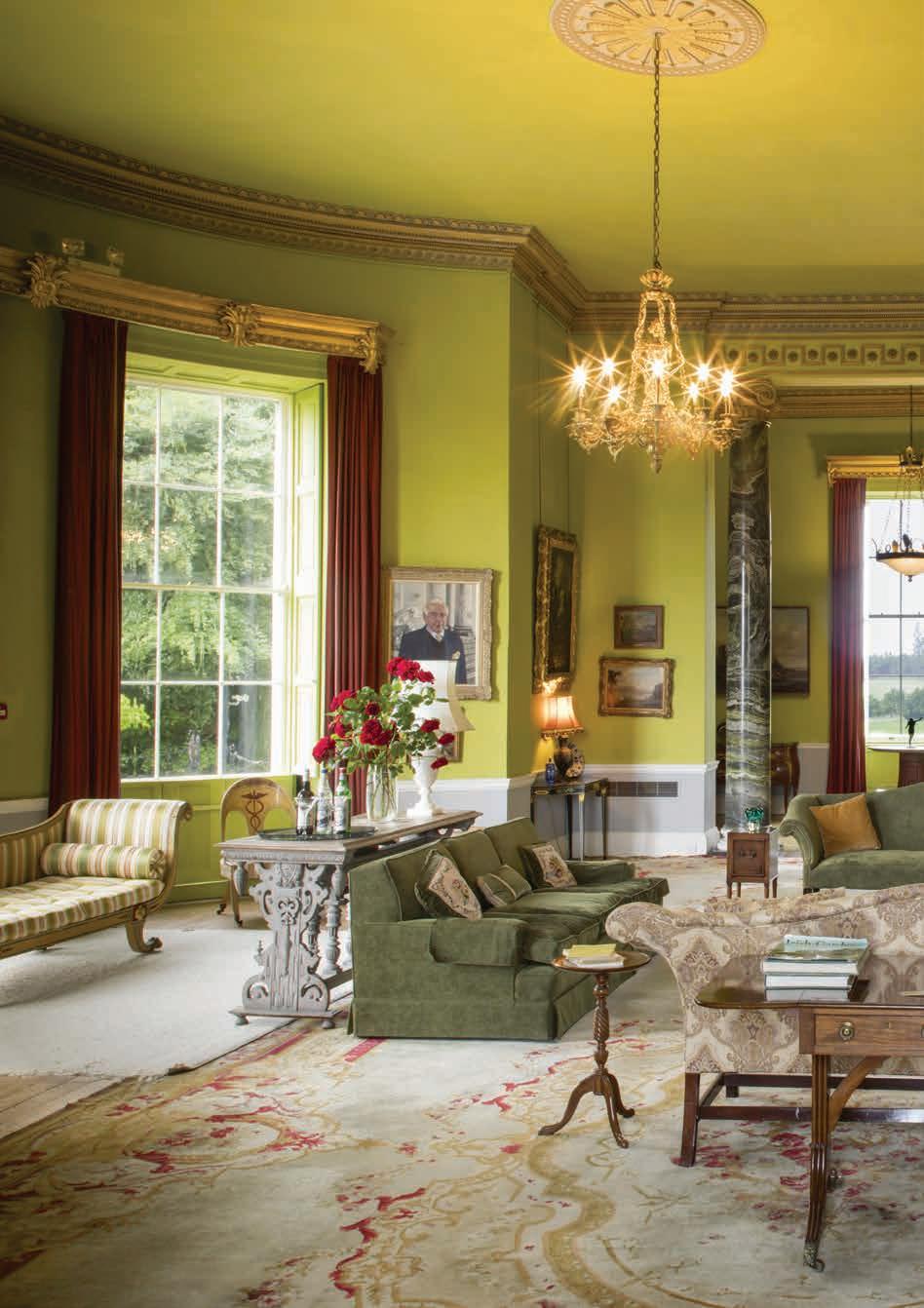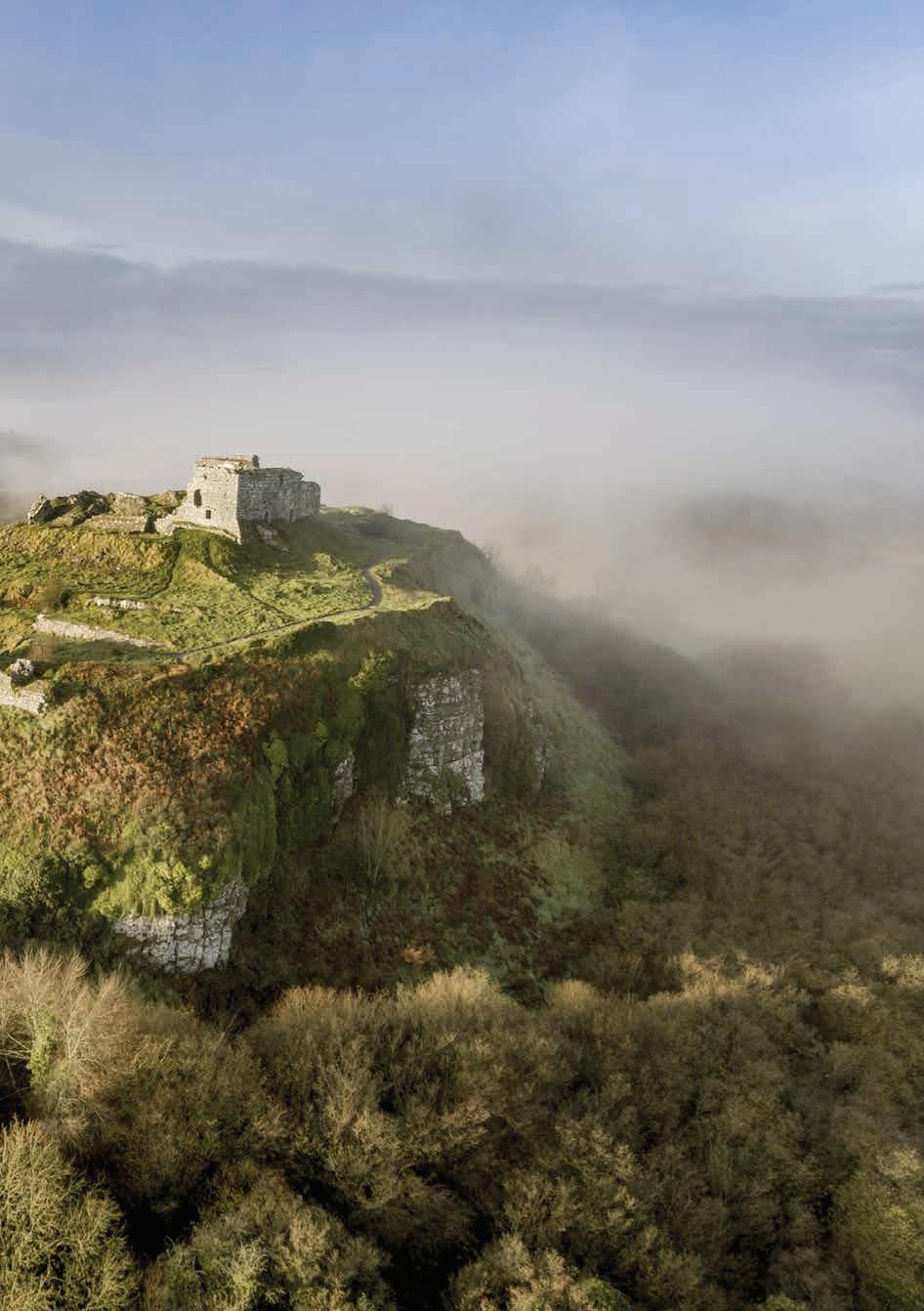
4 minute read
Abbeys & Early Christian Sites
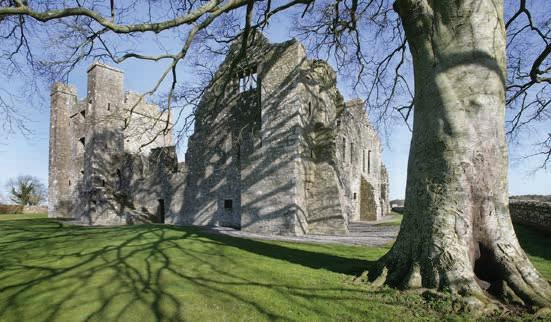
Sophie Marceau in Braveheart filmed at Bective Abbey Photo: AA Film Archive and Alamy and Icon Productions Photo: ©Photographic Archive, National Monuments Service, Government of Ireland
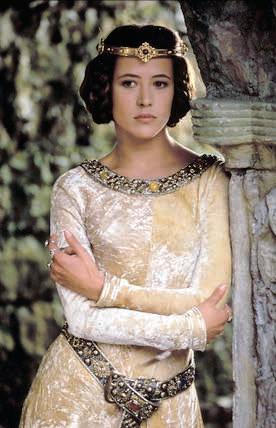
Bective Abbey
Situated on the banks of the River Boyne amid rolling Meath countryside, Bective Abbey is a spectacular and well-preserved monastic settlement. The abbey was founded by the King of Meath for the Cistercian order in 1147, and the key features – dating from the thirteenth to the fifteenth centuries – include the church, chapter house and a magnificent cloister complete with pointed Gothic arches. Due to the authentic medieval architecture, it has featured in films such as Mel Gibson’s Braveheart and Ridley Scott’s The Last Duel.
Photo: ©Photographic Archive, National Monuments Service, Government of Ireland

Cong Abbey, Cong, Co. Mayo Photo: Sean Tomkins
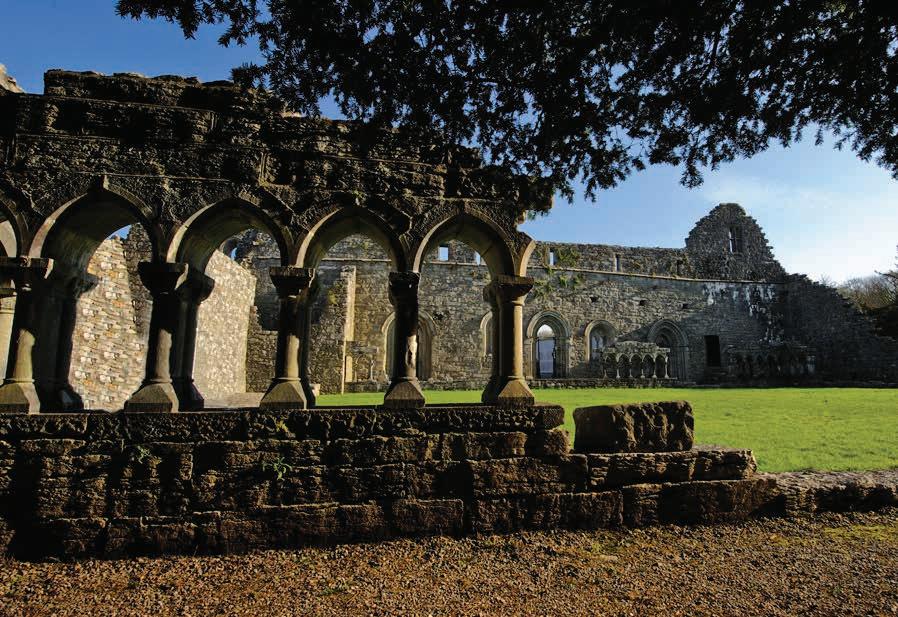
Photo: ©Photographic Archive, National Monuments Service, Government of Ireland
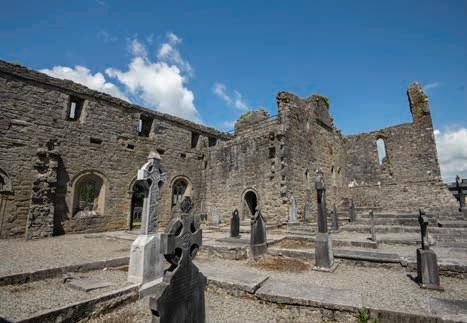
Photo: ©Photographic Archive, National Monuments Service, Government of Ireland
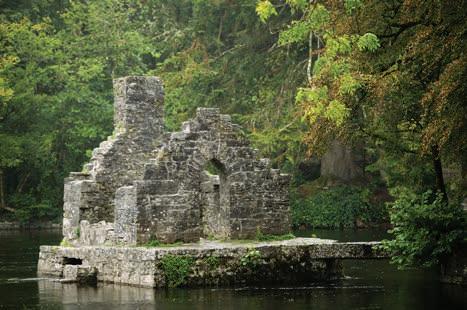
Cong Abbey
Situated in large wooded grounds on the edge of Cong, the small County Mayo town where John Ford filmed The Quiet Man in 1952, Cong Abbey is a jewel in the crown of monastic sites in the west of Ireland. Founded in 1134 by Turlough O’Connor, High King of Ireland, on the site of a seventhcentury monastery, this Augustinian abbey is a site of great importance and at its height was home to 3,000 monks. The abbey boasts some of the finest examples of Gothic architecture and masonry in Ireland, including the three lancet windows of the main church, a classic feature of the Gothic style.
Mellifont interior Photo: Ken Williams
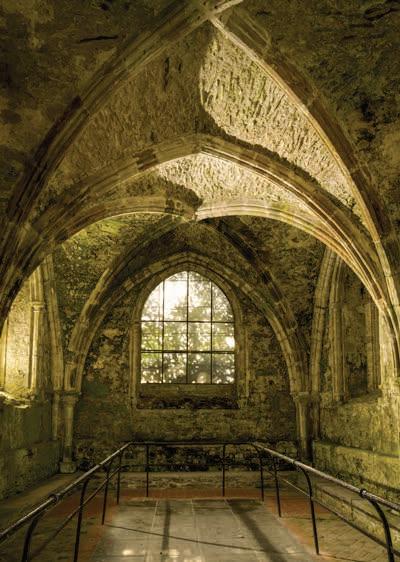
The octagonal lavabo at Old Mellifont Abbey, Co. Louth Photo: ©Photographic Archive, National Monuments Service, Government of Ireland
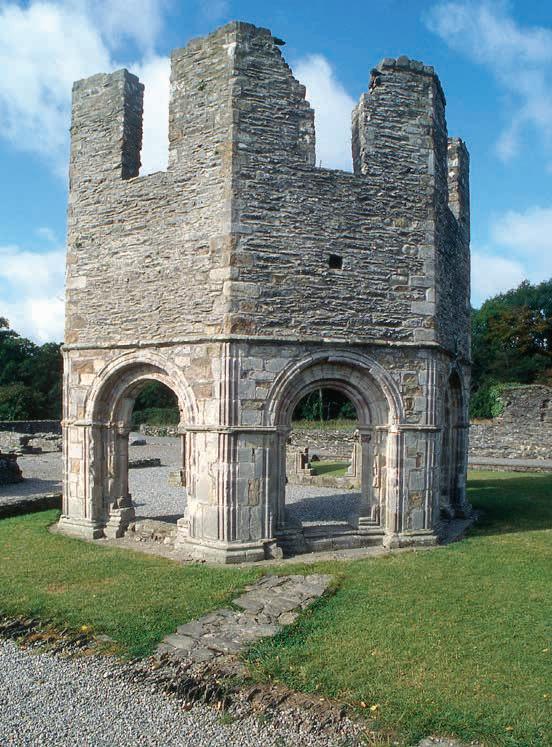
Old Mellifont Abbey
Founded in 1142, Mellifont Abbey was the first Cistercian monastery in Ireland and at times has played a major role not just in ecclesiastical history but in the history of the country. The Treaty of Mellifont, ending the Nine Years War, was signed here in 1603, and William of Orange used the abbey as his headquarters during the famous Battle of the Boyne. The ruins, set in rolling countryside on the border of counties Louth and Meath, just 30 minutes from Bective Abbey (see p. 30), boast several remarkable architectural features, including a well-preserved two-storey octagonal ‘lavabo’ (a space for ritual washing).
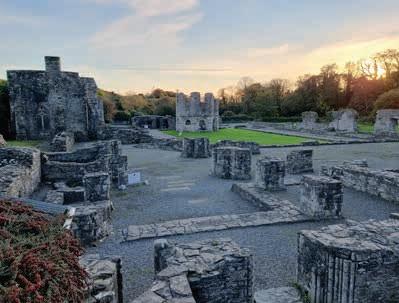
Photo: ©Photographic Archive, National Monuments Service, Government of Ireland
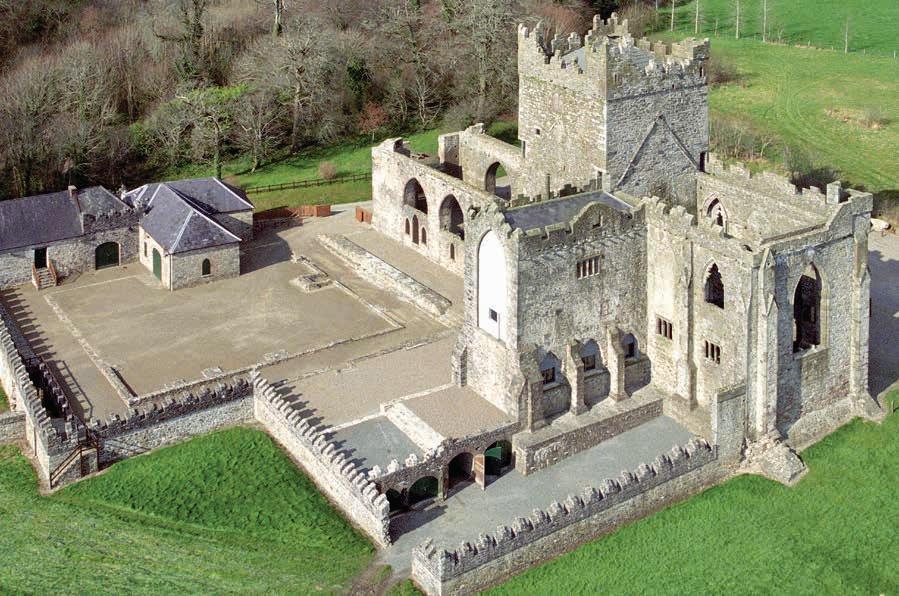
Tintern Abbey interior Photo: Aidona Photography, Aoife O’Neill
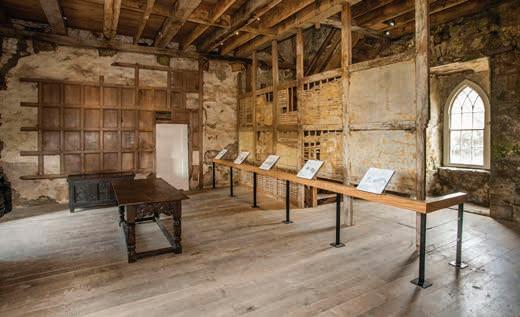
Photo: Aidona Photography, Aoife O’Neill
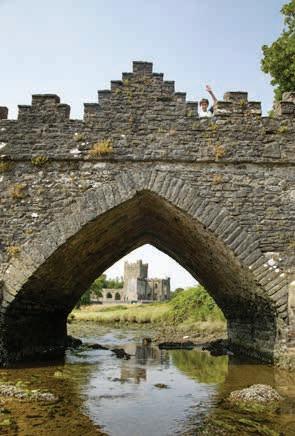
Tintern Abbey
Caught in a fierce storm at sea and fearing for his life, the Earl of Pembroke, William Marshall, vowed to establish an abbey if he reached land. The result was Tintern Abbey or Tintern de Voto (‘Tintern of the Vow’), a thirteenth-century Cistercian Monastery originally populated by monks from another of the Earl’s monasteries: Tintern Abbey in Wales. Set in a Special Area of Conservation and surrounded by woodland, the Abbey’s deeply atmospheric remains are remarkably intact, with nave, chancel, tower, chapel and Medieval cloister all still standing.
Daisy Ridley in Star Wars: The Last Jedi, filmed on Skellig Michael Photo: courtesy of Lucasfilm Ltd. Star Wars: The Force Awakens ™ & © Lucasfilm Ltd. All rights reserved. Used under authorization.
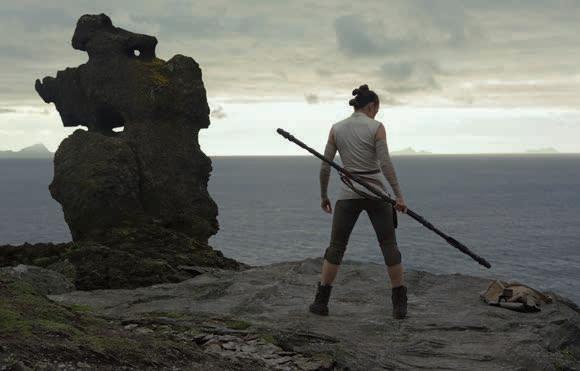
Skellig Michael
Skellig Michael is one of Ireland’s most recognisable landmarks. Rising from the Atlantic like a ragged pirate ship, the island has long exerted an irresistible allure, both for thousands of sea birds and for the Augustinian monks who once called it home, building St Fionan’s monastery and a network of distinctive beehive huts. Skellig Michael has been a site of pilgrimage since the sixteenth century and is now a major attraction for tourists, drawn to its unique architecture, breathtaking views and UNESCO World Heritage status. It is no surprise that filmmakers have numbered among the recent visitors, including Neil Jordan (Byzantium), Werner Herzog (Heart of Glass) and, most famously, the Star Wars franchise.
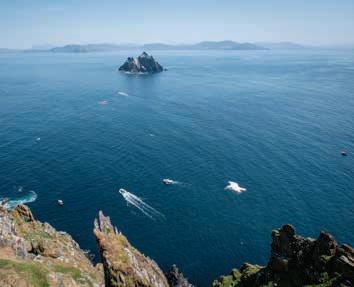
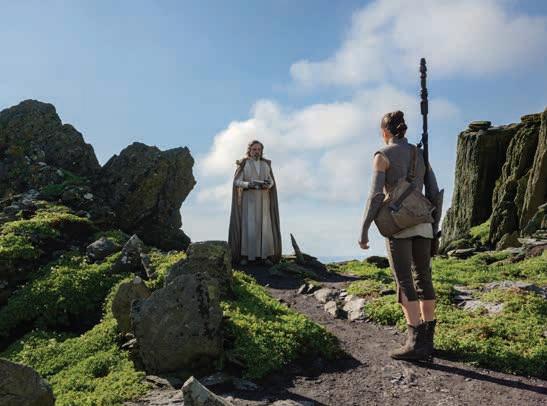
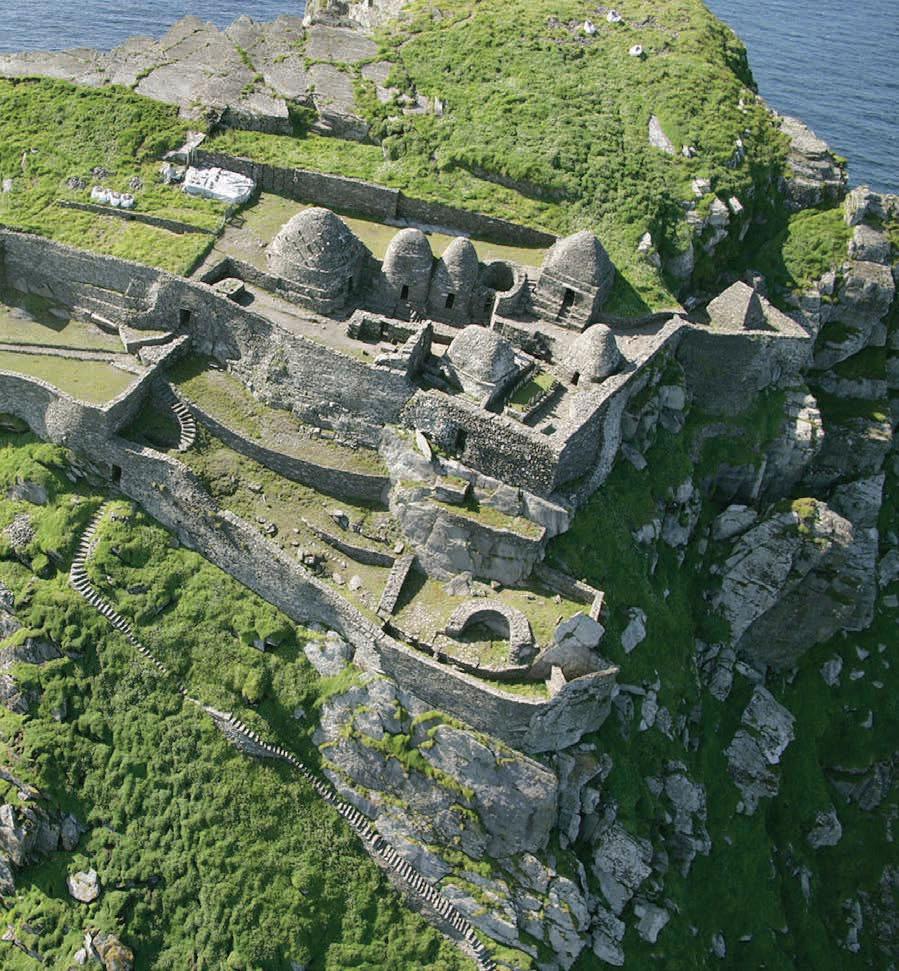
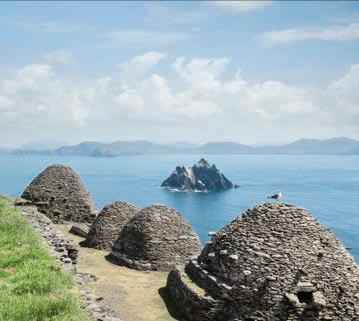
Photo: ©Photographic Archive, National Monuments Service, Government of Ireland
Ireland can boast a number of wonderful stately homes like Castletown House or the Gandon-designed Emo Court, monuments to Georgian wealth and taste complete with magnificent staircases, rotunda, ionic colonnades and vast estates filled with follies, stone bridges and deer. But the OPW portfolio includes many other kinds of house, from Tudor manor houses with their beautiful long galleries and walled gardens – to the homes of National Heroes, Daniel O’Connell and Patrick Pearse, the picture-postcard Swiss Cottage, and Victorian stately homes like Farmleigh House. Many of the greatest estates are in or near Dublin, with its studios and excellent transportation links, making them ideal locations for filming.
